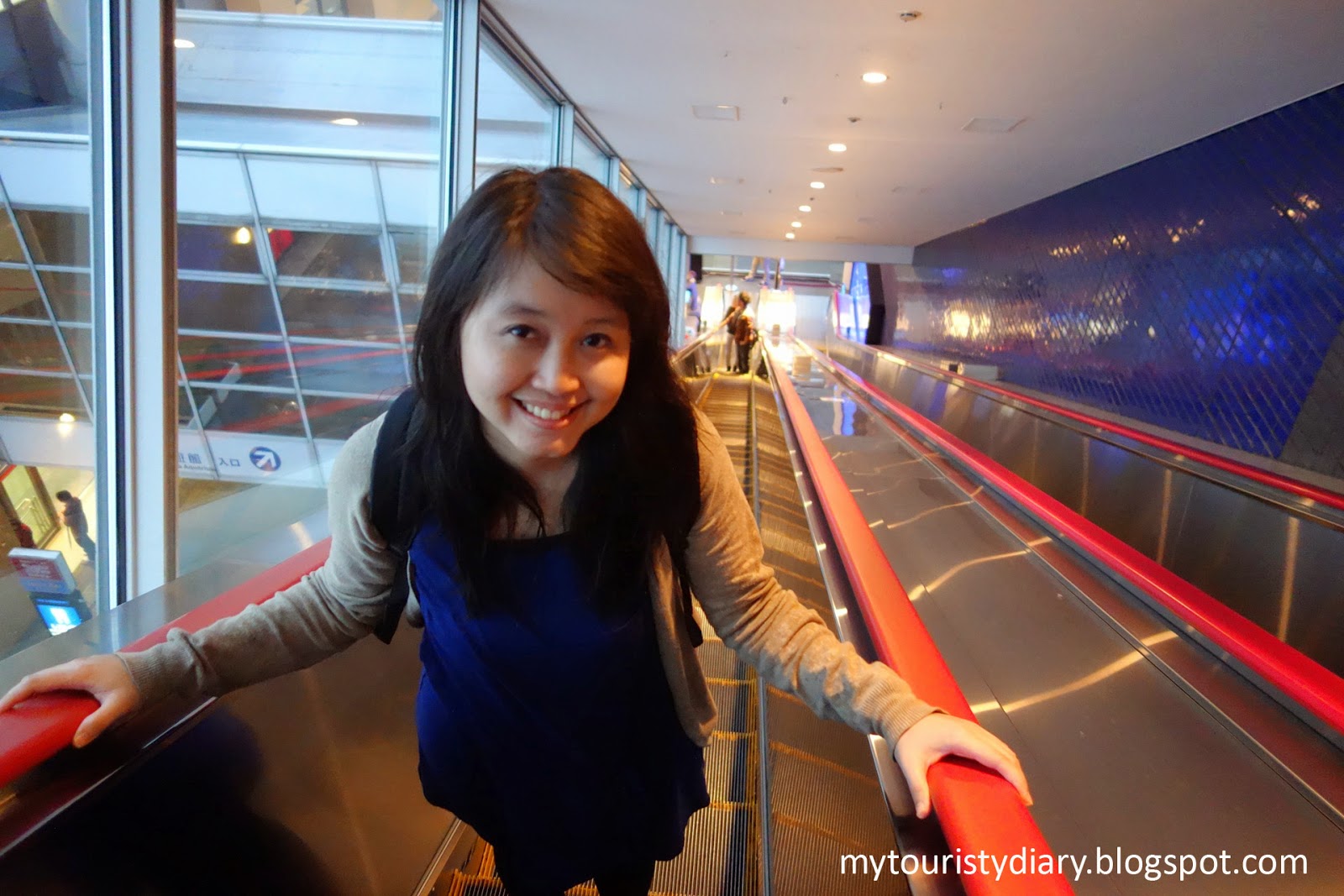Since I had Kansai Thru Pass, I can travel to Osaka's neighbor without think twice about its cost. So I deciced to travel to Kyoto. Kansai Thru Pass only cover subways, so to get to Kyoto, I took Keihan Main Line Ltd Exp from Yoyabashi station to Tambabashi and continue using Keihan Main Line Ltd Sub Exp to my destination, Fushimiinari Station. The whole travel took me 46 minutes. But if I use Shinkansen, the travel from Osaka to Kyoto will only took me 22 minutes, because the 40 minutes using Keihan Main Line Ltd Sub Exp will be replaced by 14 minutes using Shinkansen. Kansai Thru Pass doesn't cover Shinkansen, fyi.
Once I walked out from the fushimii inari station, I found out that Kyoto was more “village” than Osaka. A village that still full with tradition. To get to the shrine, I had to walk for about 5 minutes. Along the street from station to shrine, there were lots of food seller, from grilled fish to itty-bitty snack could be found there. Since the weather was chill, me and my travelling partner felt a little hungry, we decided to buy a Taiyaki, a fish-shaped cake with chocolate, red bean, or green tea fillings. We bought the chocolate one, and it tasted sweet and yummy.
 |
| baking Taiyaki |
 |
| Taiyakin ready to be served |
In the front of the shrine, there are a huge gate, called Romon Gate, which was really eye catching. Besides the Romon Gate, there was a Temizuya (water pavillion) where peoples did the cleansing ritual before entering the shrine. After passing the Temizuya, we arrived at main shrine. Near the main shrine, there were talismans that were being sold by the shrine office. The price of the talisman was around 100-200 yen (I forget the exact price).
 |
| view after the Romon gate (the big shrine is the main shrine) |
 |
| Temizuya |
 |
| Talismans in shape of mini torii |
Then after entering the gate and hiking some ladders, then we met the famous Senbon Torii (thousand of torii). There are two tunnels that we can choose, both were identical.
 |
| Fushimi Inari map, from Romon Gate to the top of mount Inari |
 |
| Entrance before the Senbon Torii |
 |
| the famous Senbon Torii |
 |
| yes, it is a long vermilion tunnel |
At the end of seibon torii, we arrive at Okusha Shrine. Actually there are many worship places in Fushimii Inari. It's like getting prize for the torii tunnels that you have been through. Even if you walk to through the torii until reach the top of mount Inari, you will find a worship place called Ichi No Mine. We didn't get ourself to the top of the mountain, because we only spent one day in Kyoto and had more destinations to catch up. So we took our way back to the entrance through the senbon torii again. Then we realized that there are names behind each torii. Those names are the names of the torii's donor. Each torri was donated by individuals or company, and their name was crafted behind each torii. I heard that the bigger the torii, the higher the price donated by the donors.
 |
| people prays at Okusha shrine |
 |
| names of the donors |
Around Fushimi inari, there were a lots of fox statues. Foxes known as the messenger of the Shinto God of Rice, Inari. There were also lots of cats statue sold around the shrine. Actually, I don't know the relation between fox and cat. But as a cat lover, it’s really hard for me to take my eyes off of their cuteness.
XOXO,
The Tourist














.jpg)














































